No products in the cart.
Table of Contents
Looking for plants that best suit your office and homeplace entrance? Calathea lutea is the one you are looking for!
It’s a beautiful and elegant plant, and its diurnal motions are known as nyctinasty. Nyctinasty refers to the circadian regular nastic movement (opening and closing of some flowers or leaves) in reaction to the advent of darkness or a plant sleeping.
The table below is the basic information about Calathea lutea care.
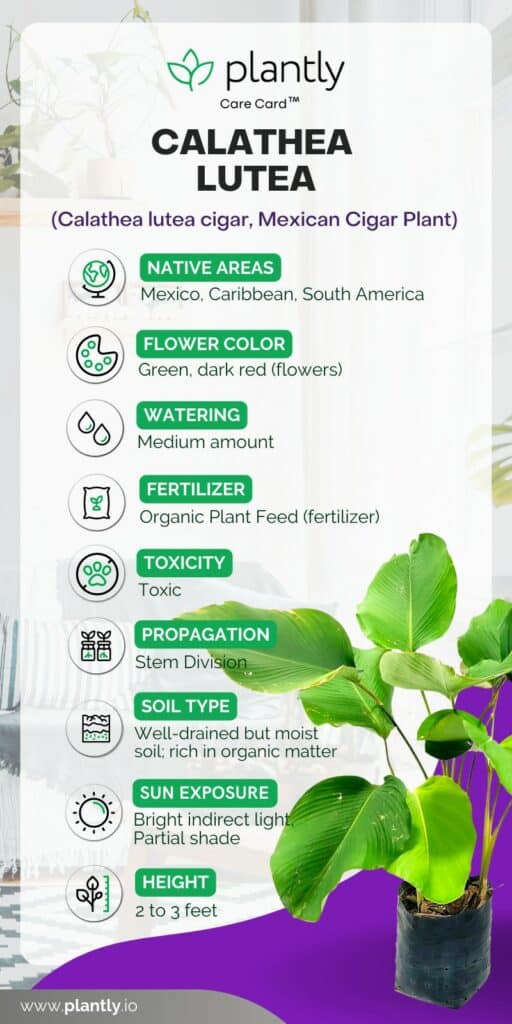
Calathea Lutea Plant Care

The Calathea lutea is also known as Cigar Plant or Pampano plant. I know you’re used to seeing low-growing calatheas, but these particular species grow up to 3 to 5 meters high. If you’re planning to place this plant indoors, make sure you have plenty of space available.
That way, you’ll have enough room to accommodate its huge size.
But despite its overwhelming size, no need to worry because this cigar calathea is easy to care for. Once you learn how to provide the best growing conditions, you’ll most likely find success. Keep reading and enjoy.
Best Soil Mix
The secret when it comes to the soil mix of Calathea lutea is high organic matter. Not only does this material improve the soil’s fertility, but it also enhances its structure. In return, the roots of your calathea plant will have better penetration and aeration.
The soil’s acidity must be slightly acidic (5.5) to neutral (7.0). In this range, the nutrients needed by your cigar calathea are most available. I recommend that you test the soil’s potting mix first using a pH meter. This goes not only for calathea but for other plants as well.
Watering Needs
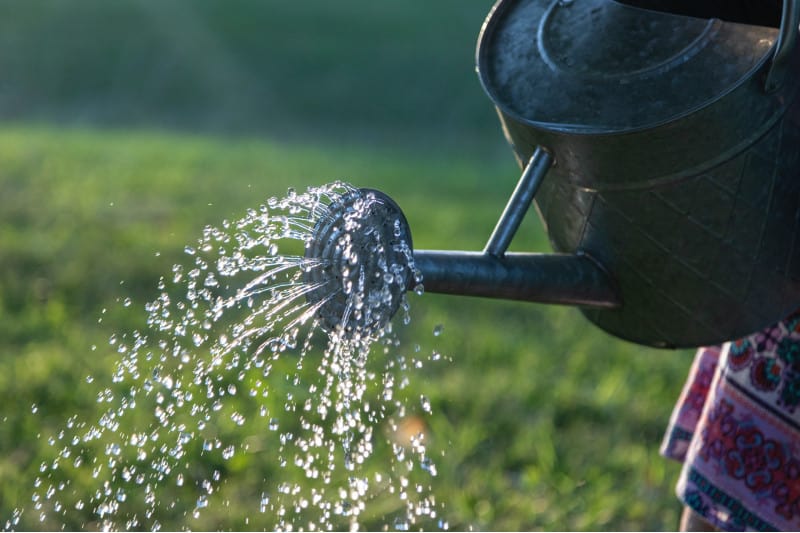
Remember that you should water the Calathea lutea only when the topsoil feels dry to the touch. Good thing because you don’t have to water every day. Depending on the season, you may need to water once or twice a week. What we want to avoid is creating a puddle below its pot, hence, overwatering.
Neither should you leave this plant dry. Rule of thumb- calathea plants love moist soil but not wet. It doesn’t have the characteristics of succulents and cacti that could survive long drought seasons. If you want to keep your calathea alive, provide medium watering.
Light Requirements
Considering that this plant’s leaves are large, we know that it would require a high amount of light. The foliage is broad and would certainly absorb more sunlight. So, try to find the brightest spot at home. If you have none, the other choice is to put it somewhere outdoors and make sure the area is partially shaded to avoid direct exposure to sunlight.
However, inasmuch as it loves plenty of light, it wouldn’t like prolonged exposure to direct sunlight. Provide partial shade during the hottest part of the day, especially during summer. This is to prevent leaf scorching.
You’d know when the plant is happy with the current light condition. Happy cigar plants would have bright and vibrant green leaves.
Preferred Temperature
Part of your care for calathea includes providing the temperature that’s most preferred by the plant. This one is tropical, so it would naturally thrive in warmer climates. A temperature range between 65°F to 80°F, or about 18°C to 27°C is always best.
If it is lower than 60°F (15.56°C), your cigar calathea will suffer from frost damage outdoors. Obviously, this outdoor plant wouldn’t stand winter, too. If your location’s temperature goes really low, the best thing to do is keep your calathea indoors. Better safe than sorry.
Best Humidity Level
For all the calathea plants, including the cuban cigar, you should maintain a high humidity level. Preferably, anything above 70% moisture level is most favorable. I know it can be hard to maintain this at home. Don’t worry, though, if the best you can have is just the average level.
Your cigar calathea will tolerate up to 50% humidity. Just don’t let it go lower.
Regular misting will definitely help. But this is going to be time-consuming because the plant is large. You’ll definitely spend a huge amount of time just spraying around one plant. So, as much as you can, find the spot that is more humid.
Fertilizing Needs
This cuban cigar plant requires a steady supply of nutrients. This means that you need to fertilize regularly. Once a month’s application will suffice.
You can use liquid fertilizer for the fast release of the needed nutrients. It also helps if you’ve packed enough organic materials in the soil before potting.
That ensures the release of nutrients for the plant to utilize in the coming months. Make sure that you keep an eye on the potting soil so it won’t accumulate excess salts. Drench the soil with running water from time to time to flush out the remaining salts in the soil.
No feeding is required during winter.
Propagation
Calathea plants are known for their beautiful foliage, but they can be challenging to take care of. Calatheas, on the other hand, is relatively easy to propagate during its growing season if you know what you’re doing.
Pruning off your Calathea fosters bushier and taller growth and is a fantastic method to get rid of any straggly or lanky winter growth. But rather than discarding those lovely green Calathea cuttings, why not multiply them and create a new mother plant?
What are the several ways to reproduce your Calathea plant?
While seeds can reproduce plants, this is a complicated process that takes a long time and is not always successful. Calathea plants are most normally propagated by dividing the main plant. This means you’ll need a mature Calathea to get two or more plants from it.
Remember: Stem or leaf cuttings are not used to propagate Calathea lutea. This mode of reproduction is not acceptable for these species. Stem cuttings lack the required plant tissue to create new roots and the growth of a single plant.
Here’s how to propagate your Calathea plant:
Regular watering is needed a few days before you would like to separate it. Remove the entire Calathea lutea from the pot and scrape the soil away from the roots softly. Carefully detach and divide the root system using pruning shears and a sharp cut.
Check if each cluster has its root system and if the leaves are still attached to the stems.
When everything seems to be in good condition, you may transfer the new plant to a separate container and take care of it regularly.
Following the division of Calathea lutea, the adjustment time is critical. Maintain moist, but not soggy, soil. Keep in constant temperatures and humidity levels. To produce a warming effect and boost humidity, cover the fresh seedlings with a plastic tent.
You’ll be able to show off the growth of your new Calathea Lutea within a few weeks.
Growing Zones
The calathea loves a place with tropical temperatures. Tropical and temperate regions under USDA Zones 10-11 are suitable for this plant.
Potting and Repotting Techniques
If the calathea is planted on a pot, be sure to plant it while the roots are free from root bound or suffocation. Remember that this cuban cigar can grow really big. After about two years, you need to transfer it to a bigger container.
Wait for early or mid-spring before you repot your cigar calathea. Your goal is to minimize the stress that the plant will possibly experience. Be careful not to damage the roots when potting it to a new container.
Other Calathea Species
There are approximately 200 species of calathea plants. One of which is the Calathea lutea. Here are some of the examples of calathea species that you may encounter:
Round-Leaf Calathea
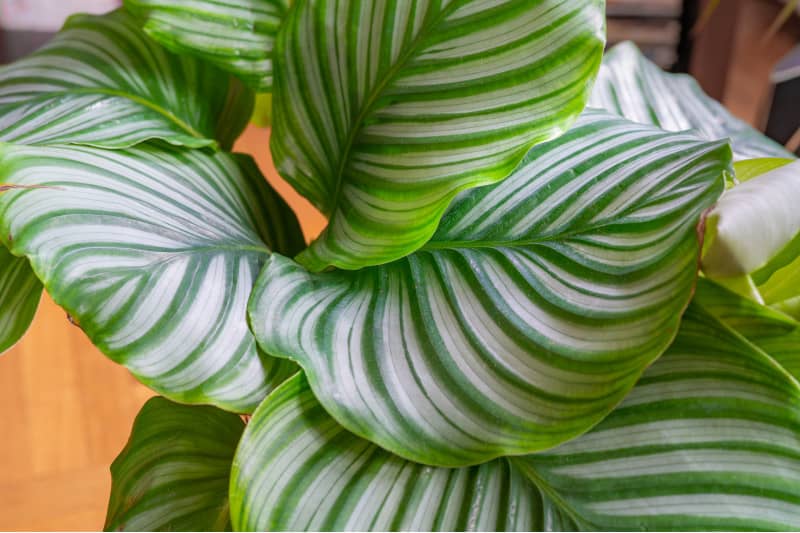
Calathea orbifolia has 8-12 inches wide, leathery leaves with creamy and light-green stripes. It prefers humid conditions and well-draining soil. Keep it under partial shade.
Rattlesnake Plant
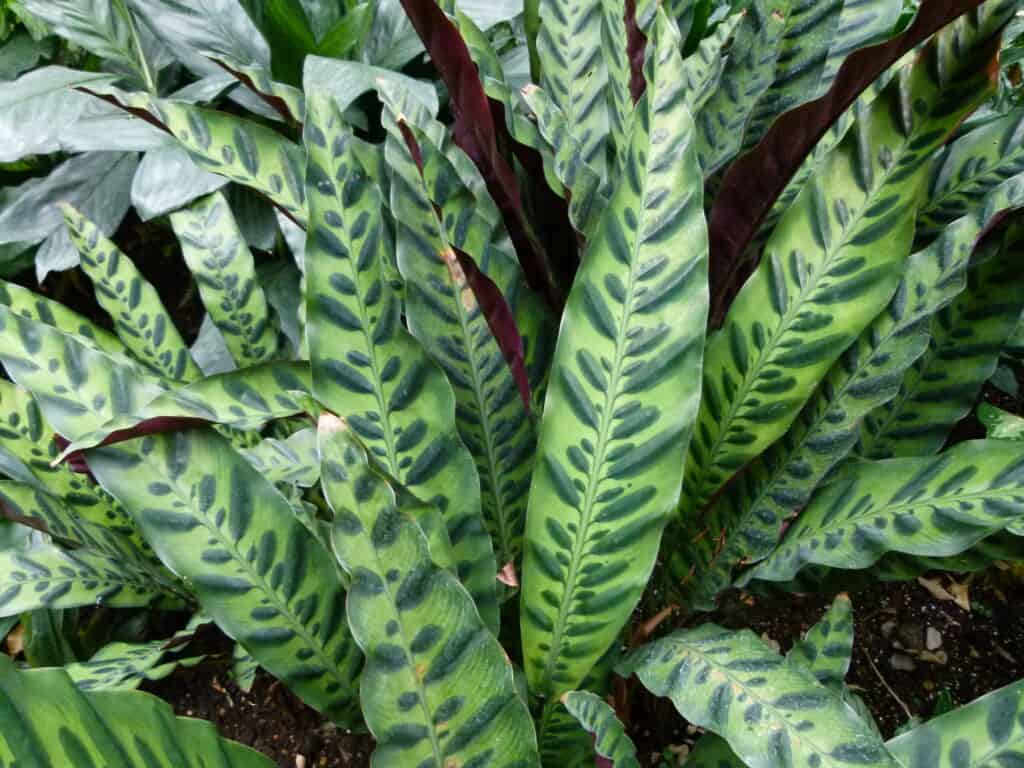
Calathea lancifolia features long and narrow, light-green leaves with edges with dark green marks. Place the plant in bright filtered light and use rich, well-draining soil.
Furry Feather

Also known as velvet calathea, it has lance-shaped green foliage with velvety purple undersides on long burgundy stems. It is tolerant to lower light conditions.
Corona
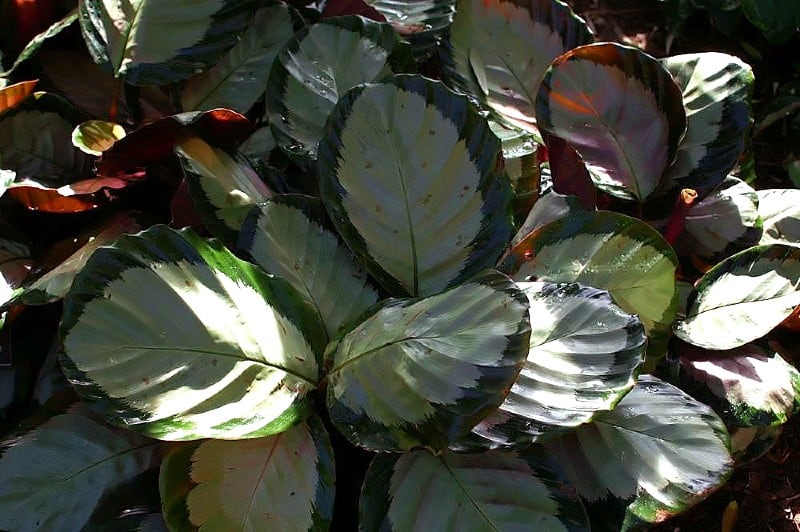
Corona, or Rose painted calathea has large glossy foliage with bright green to creamy patterns. It thrives in well-draining soil. Protect the plant from cold drafts.
Jungle Velvet Calathea
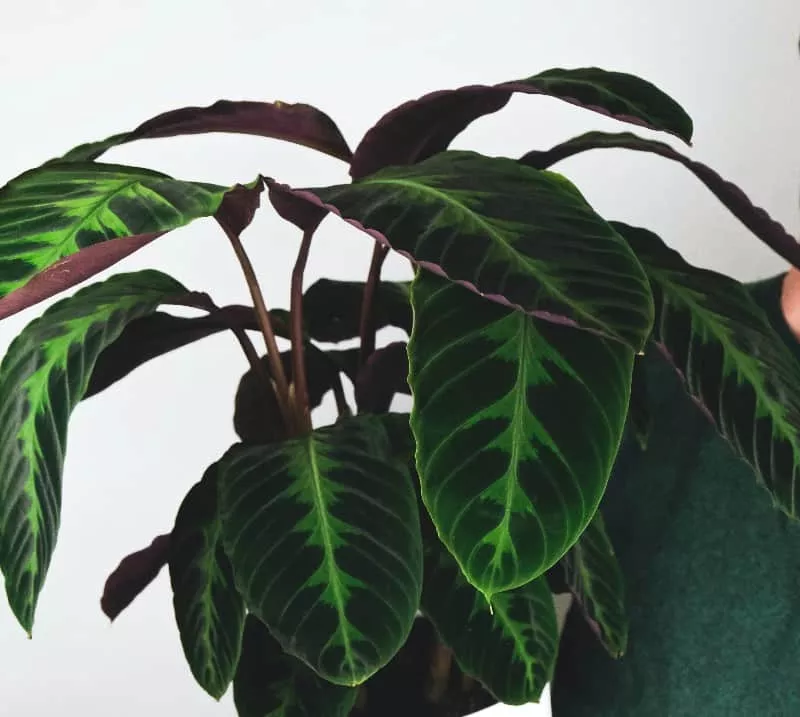
It grows in lance-shaped, velvety dark green leaves with light green patterns. Grow the plant in highly humid conditions or use a humidifier.
Possible Diseases & Pests
Calathea, like many tropical plants, might have unpleasant visitors from time to time. Spider mites, fungal mosquitoes, scale, and mealybugs are the most related features. The most frequent treatment for them is neem oil.
Calathea’s green and broad leaves are a favorite food of several caterpillars. They produce tiny larval forms, which are laid by various moths or butterflies.
Diseases
Pseudomonas bacteria can produce pseudomonas leaf spot and pseudomonas blight, which are two separate issues. Water-soaked patches will appear on your plant’s leaves if you have a pseudomonas leaf spot. These are usually dark green to black, and there are rarely more than a couple on each leaf.
Monterey Liquid Copper Fungicide, a copper-based fungicide, can help clear things up.
Pseudomonas blight is a considerably more complicated problem. Water-soaked regions will feed up along leaf veins and quickly spread throughout the leaf surface. The damaged portions will become papery, brown, or yellow as the disease progresses.
Plants afflicted must be removed and eradicated to keep them free from it and avoid spreading the disease to other plants. This bacterium could linger and grow in the soil, so get rid of it as well.
Frequently Asked Questions
Cigar plant calathea lutea are occasionally recommended as indoor plants. However, it requires bright light and overhead lighting to avoid growing at an odd angle.
On the other hand, this Habana Cigar is probably best cultivated in the garden, in part sun or filtered light. This plant can grow in practically full sunlight in more tropical climates where humidity is more regular.
Calatheas are typically low-growing, shade-loving plants with brightly colored leaves. Calathea lutea, on the other hand, is a considerably taller growing species that can reach heights of 3-4 meters and can tolerate some bright rays of the sun.
While the Maranta species is known as the prayer plant, the Calathea species are also known by that name. Both belong to the Marantaceae family, which includes the arrowroot prayer plant. Calathea species, on the other hand, aren’t technically prayer-plants because the term is reserved for the Maranta genus.
C. lutea is available online and at your local nurseries. Here at Plantly, we also offer the best and high-quality Lutea and will deliver it to your front door to avoid the hassle of picking it up.
Whether you want to buy, sell or simply reach out to other plant enthusiasts, Plantly is the right place to be!


